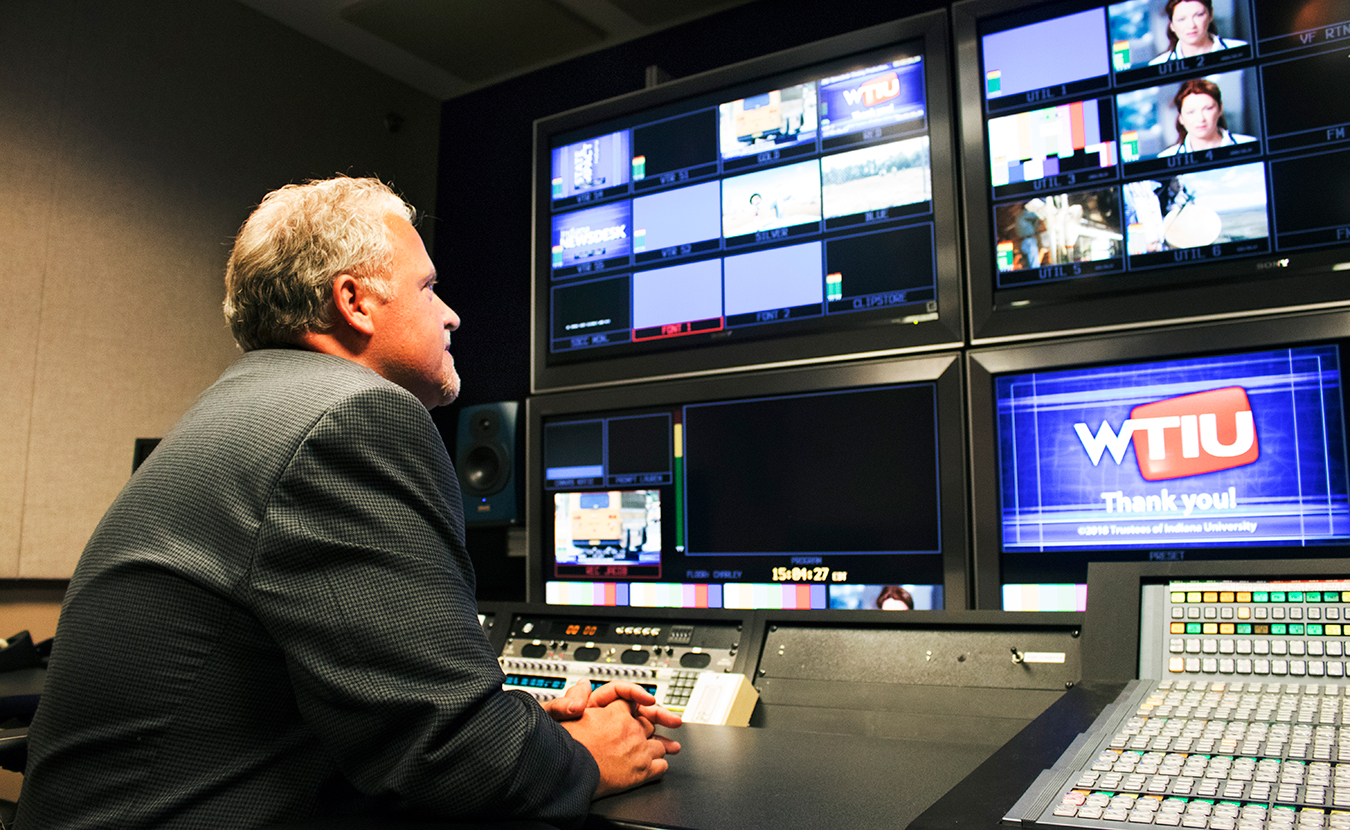It takes 18 to 36 months to produce one long-form documentary at WTIU, Bloomington’s publicly broadcast television station.
It takes a team of producers, membership and funding officers, a marketing director, videographers, graphic designers, and audio engineers.
It takes an awareness of current media trends and a certain sapience for how local stories fit into a larger sense of history and identity, however shifting those may be.
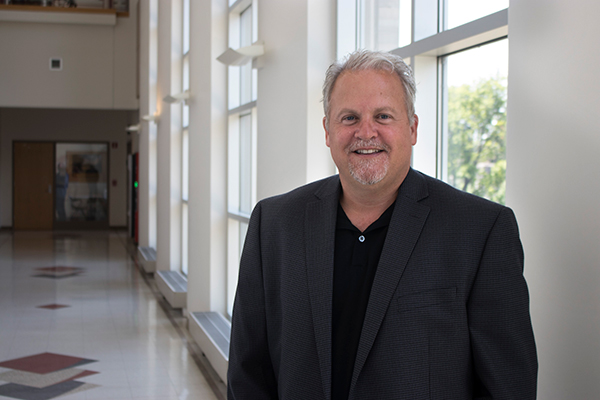
Anderson is already working on long-form documentaries for the 2021 programming year. | Photo by Tommy DeNardo
That is, it takes a great deal of acumen and careful planning in order to keep a production pipeline full with films — which WTIU does, pumping out three to five locally produced, long-form documentaries every year since 2003. For a coverage area that includes one small city and a rural swath of small towns, this is not common in the world of public broadcasting. Truly, it’s anything but.
In this regard, WTIU contrasts with other PBS stations, which air content predominantly from the national network feed. “We signed on the air in 1969,” says Rob Anderson, the executive producer at WTIU. “We’re about to celebrate our 50th anniversary, so that’s a nice milestone.” WTIU’s first long-form documentary, about Angel Mounds archeological site in Evansville, was produced in the early 1970s. Anderson is an Indiana native who, after working in television production in Philadelphia and New York, returned to his home state to enlist in public broadcasting. “So since then,” the Emmy–award winner continues, “we have this long legacy: The station has always produced documentaries or long-form programs locally, and we take that very seriously.”
Churning out locally made documentaries that regularly earn Emmys from the National Academy of Television Arts & Sciences and honors from the Society of Professional Journalists (SPJ) is no simple logistical feat. Right now, Anderson is already trekking into the weeds of the 2021 programming year. The station’s department heads meet quarterly to vet documentary ideas, many of which are pitched by the producers themselves. If an idea meets the mission of WTIU, a producer of record attaches to the project, and enough staff believe funding would likely be imminent, only then can the idea be green-lighted. But without adequate funding, a requirement that can take anywhere from six months to two years to secure, a film might never leave the ground.
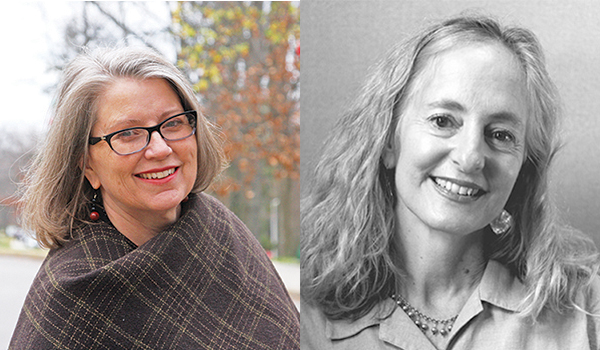
WTIU’s Marianne Woodruff (left), corporate development officer, and Nancy Krueger, major grants and gifts officer. | Courtesy photos
“They say the cost of a finished documentary is $1,000 a minute, which, from what I have seen when we try to put together budgets, that’s approximately right,” says Nancy Krueger, WTIU’s major grants and gifts officer. Right now, Krueger and Marianne Woodruff, WTIU’s corporate development officer, are rounding up support for a documentary on Indiana round barns. In lieu of advertising dollars, they must find local businesses and granting foundations to partner with this particular film in perpetuity, meaning sponsors are recognized by that particular documentary forever in the program’s classic messaging (“Beautiful By Design is made possible by …”). “And that’s not always easy,” says Krueger. “It’s like the cart before the horse.” Not only is the hunt for sponsorship sometimes a hardy and complicated undertaking, the film itself is still just an idea, perhaps only in an infant stage of research, when Krueger and Woodruff pitch to potential sponsors. “We really have to rely on having those strong partnerships with people within our viewing area and the businesses that support that area,” says Woodruff.
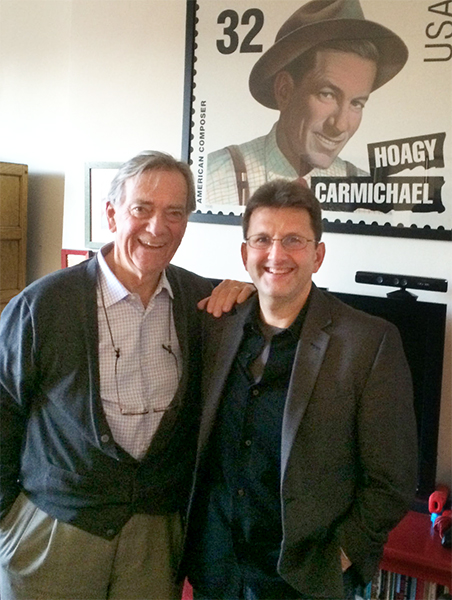
Todd Gould (right) is currently working on a documentary about Gennett Records, which recorded famous jazz musicians of the early 20th century. Here, Gould stands with Hoagy Carmichael’s son, Hoagy Bix Carmichael, during an interview in New York City. | Courtesy photo
“You’re always courting,” says Krueger.
“Habitual dater,” Woodruff adds.
Todd Gould, one of WTIU’s in-house producers, is two years into a long-form about Gennett Records, a studio in Richmond, Indiana, that recorded famous jazz musicians of the early 20th century. After the idea received a green light, Gould went fishing for experts: “Everything from the history of Richmond, Indiana, to the history of the people who made these pianos and recorded this music, actual musicians, archivists, and historians all over the country, wherever I can find stuff — because I won’t know necessarily what all is out there,” says Gould.
At the time of this interview, Gould had finished shooting interviews with his experts. Now he is gathering and shooting archival material: old photographs, artifacts, audio tracks, and film footage. We meet at a site survey at the Hoagy Carmichael Archival Library in the Wylie Building on the Indiana University campus; he wants to include original shots of Carmichael’s piano. He has shots planned out in increments of a few seconds each.
The documentary, called The Music Makers of Gennett Records, will premiere at the end of 2018.
In the end, shooting is only one short leg in the race to finish a long-form documentary. In-house producer Ron Prickel says, for him, it’s only the beginning. “The general perception is once you’ve got everything shot, you’re basically done…. But I personally think the real magic in producing a documentary happens in the edit room,” says Prickel, who will spend, on average, three solid months editing a long-form documentary.
Prickel’s documentary James Whitcomb Riley: Hoosier Poet was recently celebrated at the 2018 Society of Professional Journalists Best in Indiana awards ceremony. He is currently working on a documentary titled Horse Power about the Indiana equine industry.
“What’s the most difficult part of making a film?” I ask Prickel, expecting an answer about the endurance and patience required of a producer to finish a long-form. “Making something that’s meaningful and relevant,” he says. “You can fill 56:46 — that’s how long they have to be, 56 minutes and 46 seconds — but to make something to fill the hole that’s meaningful.”
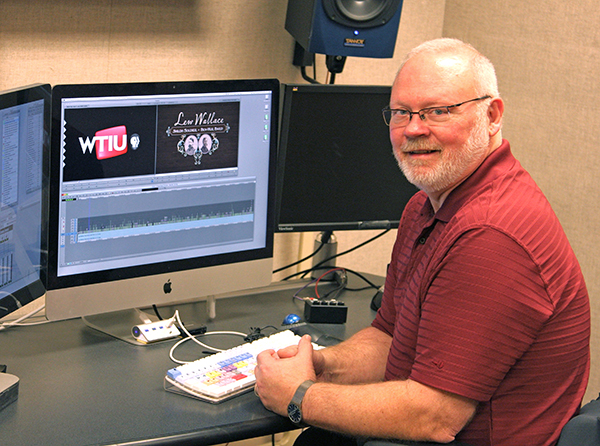
WTIU in-house producer Ron Prickel. | Courtesy photo
Susanne Schwibs teaches filmmaking, film-producing, 16-millimeter film, experimental film, and a documentary class for IU’s Media School. She also moonlights as a producer for WTIU. In her office at the newly renovated Media School, Schwibs says her favorite part of the process of making a documentary is imagining it. “Because then everything is still possible,” she says, smiling. “Then there’s always a period when you’re filming and the bottom drops out. Sometimes when you edit, you can harness it back into at least a part of what you imagined, and that’s a really wonderful feeling.”
“And you forget all of the frustration,” I offer, having known the feeling myself as a writer.
“You forget all of it, yeah. It’s like giving birth, right?” Schwibs laughs. “It’s just terrible, but you forget all of that.”
The editing process, beyond arranging the storyline, involves layering endless sound bites, audio and video tracks, music, sound effects, and graphics, like the intricate structure of a puff pastry. Each layer endures an almost infinite onslaught of minute adjustments. In the editing room for Schwib’s and in-house producer Justin Crossley’s Beautiful By Design: The Indiana University Bloomington Campus prior to its premiere on June 2, audio engineer Kevin Evans switched one audio track of an interview, played over a shot of the clock tower, for another audio track of the same bit of interview. The first version played too hot; the second version, though, sounds slightly softer, more dulcet, and it melts into the video as if they had been somehow made inseparable from one another.
WTIU documentaries tell stories of Indiana. There are pragmatic, financial advantages to this: Local documentaries draw Hoosier viewership, keep down travel and production expenses, and appeal to potential sponsors and granting entities from the area. But what everyone — Anderson, Krueger, and Woodruff, the producers — seems to agree on is the necessity of telling these stories. “Who would tell them if we didn’t?” says Woodruff. “No one else would be doing it,” responds Krueger. Schwibs agrees: “Documentarians, that’s all they’re about — the little everyday, seemingly mundane things.”
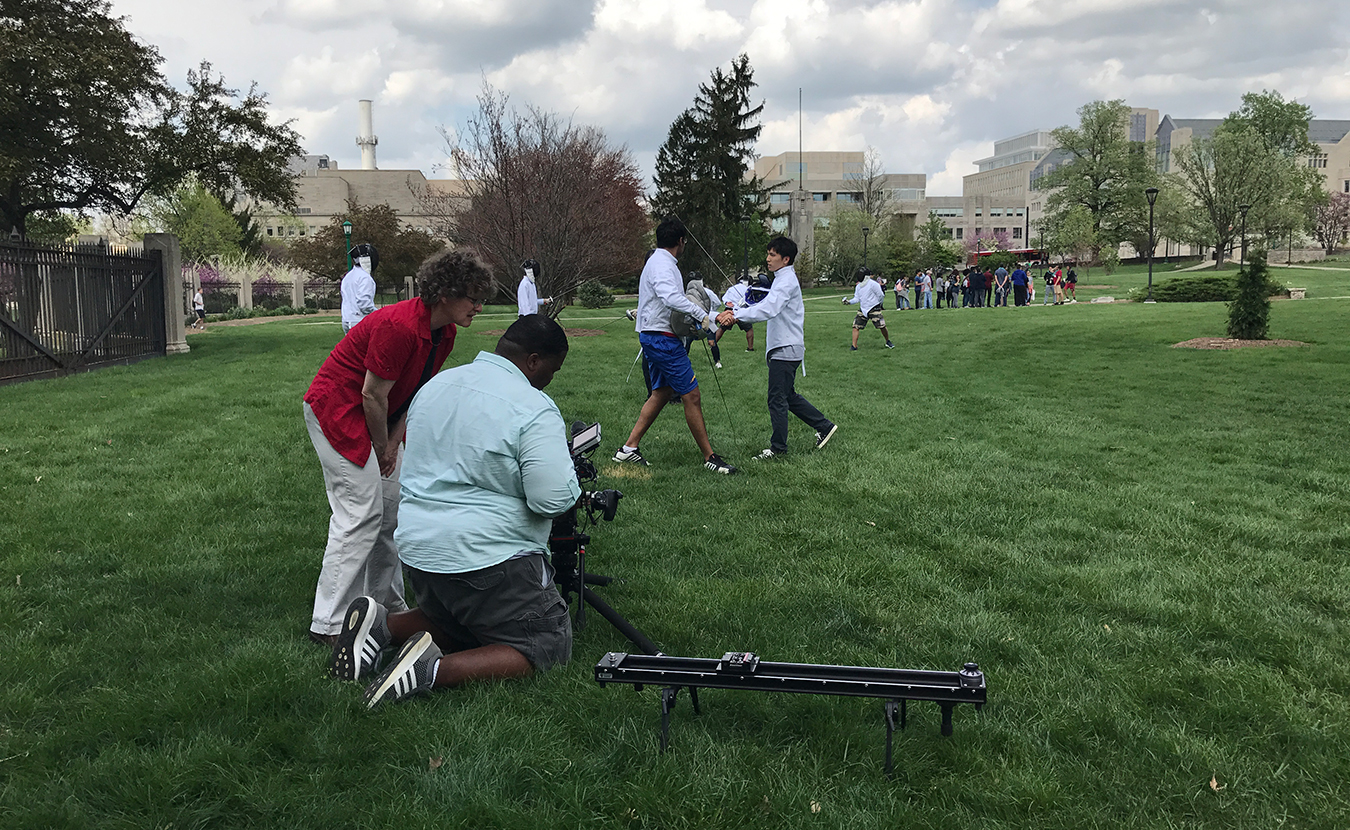
WTIU producers Susanne Schwibs (left) and Justin Crossley work on a shot for their documentary, “Beautiful by Design: Indiana University Bloomington Campus.” | Courtesy photo
Schwibs was born in Germany, first arriving in Bloomington on a student exchange program to study comparative literature, film studies, and telecommunications at IU. Her documentaries pay tender focus to Indiana’s landscapes, the intersections of town and country, the rural and industrial lives that are embedded in them. Speaking of the work of William Eggleston, a Southern photographer Schwibs admires, she could be describing her own work and fascinations with film: “There’s so much — I don’t know what it is — there are these moments, and these moments always tell much more than just the moment…. That’s why I think the local and the landscape can bring you so much.”
“It’s like a pebble that drops in the water and ripples out,” says Gould in his office in the Radio-Television Building, which houses WTIU. “You have this little studio in Richmond, Indiana, that records all these artists before they become famous, and then the next thing you know, one of them becomes Louis Armstrong, and he becomes the greatest trumpet player of all time. Or it’s Ernie Pyle, the leading journalist in World War II.” One wall in Gould’s office is completely hidden by a large bookshelf: the left side filled with books on Gennett Records and jazz, the right side with books on Ernie Pyle, his next documentary subject, scheduled to premiere in 2020. “Those are the kinds of stories that I really like — stories where I can find that root that started in Indiana, that blossoms out into something really cool, that affects millions of people around the world,” he says only with reverence, no touch of hubris in his voice. “And that’s really exciting.”
[Editor’s note: You can watch WTIU’s Beautiful By Design: The Indiana University Bloomington Campus here through the end of June. The next documentary, set to premiere in August, is about Columbus, Indiana’s Clessie Cummins, the founder of Cummins Engine Co. Clessie Cummins: Hoosier Inventor is produced by freelance producers Andie Redwine and Storme Wood.]

